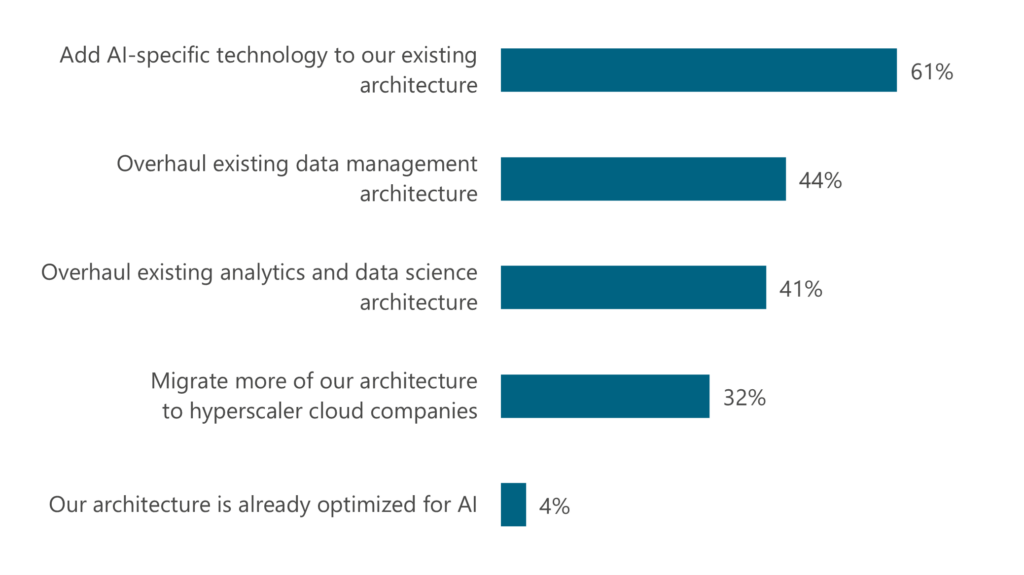New Report Unveils Key Strategies for Navigating AI Adoption in Business
March 2024 – A new report by analyst firms BARC and IT Market Strategy titled “Optimizing Your Architecture for AI Innovation” authored by Shawn Rogers and Merv Adrian has just been released, offering invaluable insights and strategies for enterprises looking to harness the transformative power of Artificial Intelligence (AI). This comprehensive study, based on survey results from 335 data leaders and practitioners, sheds light on the adoption status, benefits, risks, use cases and top strategies for integrating AI into business operations.
“The findings of our survey indicate a clear consensus among data leaders and practitioners on the transformative potential of AI, yet also highlight a significant readiness gap,” said Shawn Rogers, CEO of BARC US and co-author of the report. “Businesses are eager to adopt AI, but the journey is fraught with challenges ranging from skills shortages to compliance issues. Our goal is to offer a pragmatic roadmap that addresses these challenges head-on, enabling businesses to unlock the full potential of AI.”
Key Findings:
- Over 95% of respondents are actively planning for AI, yet only 20.5% are in a state of high readiness.
- Most progress has been made in the area of “security standards & compliance”, with 56% of companies formalizing or revising their initiatives.
- IT departments play a crucial role in AI implementation, involved 95% of the time, surpassing even executive management involvement.
- The skills gap presents the most significant challenge to AI innovation, highlighting the need for strategic planning to address this issue.
- Companies prioritize familiarity and credible use case experience over unique and innovative technology when selecting AI and GenAI project partners.
- Microsoft Azure leads as the preferred platform for AI workloads in the cloud, underlining the competitive landscape among hyperscalers.

Figure 1: “How will AI innovation and projects transform your company’s technology architecture?” (n=335)
Recommendations for Enterprises:
- Address the skills gap early by promoting free training, certifications and a culture of knowledge sharing.
- Approach the AI market with patience and strategic planning, anticipating and preparing for potential customer backlash in the coming years.
- Start AI integration efforts with existing, trusted suppliers to leverage existing relationships and ensure seamless fit and integration.
- Prioritize compliance, regulatory concerns and a Responsible AI strategy to align AI practices with company ethics and KPIs.
- Enhance existing business intelligence and analytics capabilities with AI to achieve immediate ROI through automation and AI-generated insights.
Merv Adrian added, “The journey towards AI innovation is not without its hurdles. However, with a well-thought-out strategy, businesses can navigate these challenges effectively. This report serves as a compass for organizations, guiding them through the complexities of AI adoption to realize its vast potential.”
“Optimizing Your Architecture for AI Innovation” offers a roadmap for enterprises to navigate the complexities of AI adoption successfully. By following the outlined strategies, companies can leverage AI to drive innovation, improve operational efficiencies and maintain a competitive edge in the rapidly evolving digital landscape.
